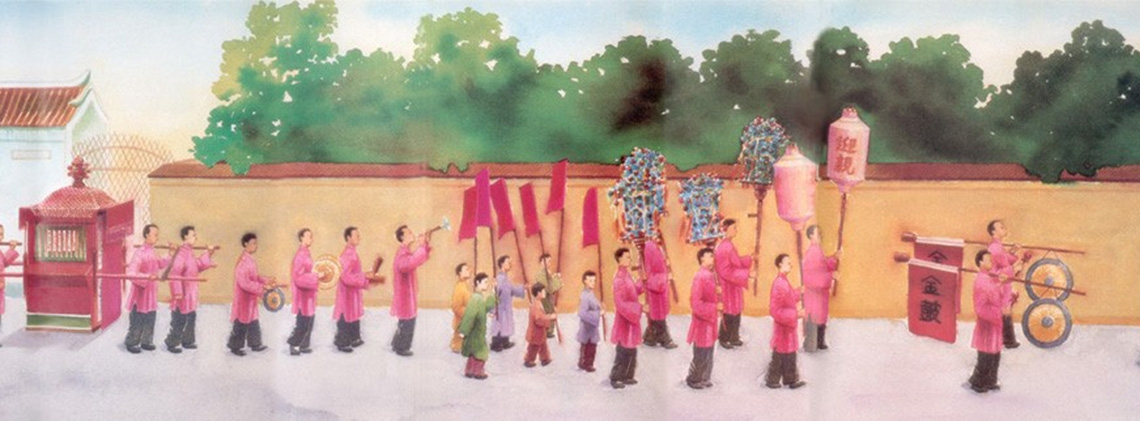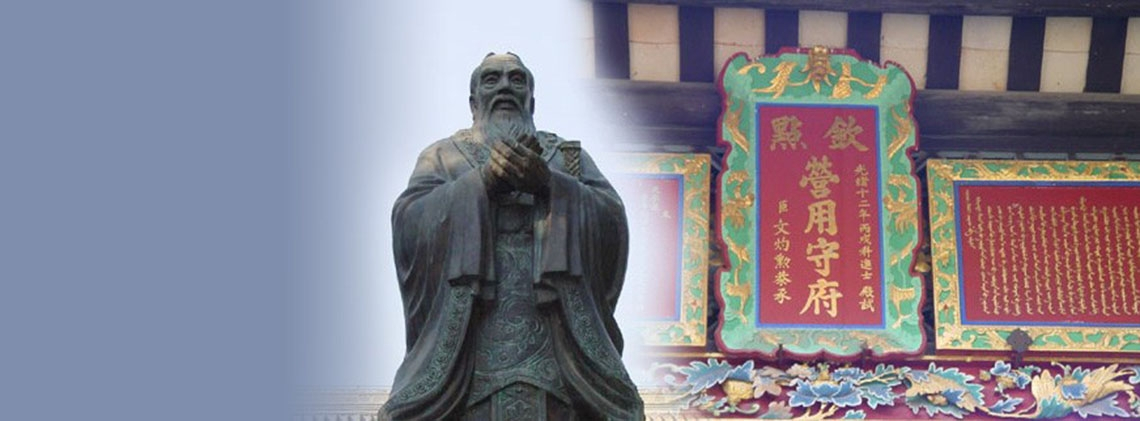
Rites—Traditional Ethics in Ancient China
Splendid
Chi Culture
Topic
Traditional Ethics in Ancient China
The term “Five Relationships” is based on ethics, which refers to a set of moral principles and norms concerning interpersonal relationships. Confucianism, as the mainstream of traditional Chinese ideology, also played a dominant role in traditional Chinese ethics. The “Five Relationships” (ruler to ruled, father to son, husband to wife, elder brother to younger brother, and friend to friend) are emphasised in Confucian ethical and moral values. Confucius and Mencius believed that if everyone did his part and fulfilled his duty, a harmonious society and an orderly country would be formed.
Ethics and morality often go hand in hand. Morality, rooted in ethical relationships, can provide standards and norms for people’s common life and behaviour to measure their rightfulness. The Confucian ethical values are the core of the Chinese moral system. In ancient times, Sangang Wuchang (三綱五常, the Three Fundamental Bonds and Five Constant Virtues) and the Three Character Classic (《三字經》) were used as moral standards to restrain people’s behaviour. The Three Character Classic , the Hundred Family Surnames (《百家姓》) , and the Thousand Character Classic (《千字文》), collectively known as the “Three, Hundred, and Thousand” (三百千, Sanbaiqian) classics, were among the most popular teaching materials in ancient Chinese childhood education. Such teaching materials were designed to make it easier for children to accept traditional ethical norms. In addition to learning the “Three, Hundred, and Thousand” classics, children were also taught to follow the family codes and instructions. As early as the Western Zhou dynasty (西周), the Duke of Zhou (周公) created a rule to exhort and instruct his descendants, which highlighted moral cultivation and its importance in self-cultivation and governing the country. The Family Instructions of Master Yan (《顏氏家訓》) from the Wei-Jin Northern and Southern dynasties (魏晉南北朝) and The Family Instructions of Zhu Xi (《朱氏家訓》) from the Southern Song dynasty (南宋) were both famous works of this kind that have been passed down to this day.
Filial piety is the most valued trait in Confucian ethics. Confucius once said that a father should care for his children, who should, in turn, understand what his father is thinking about. They should take their own ethical responsibilities. This lies behind today’s childhood education of honouring one’s parents and respecting the elders. Vigorously as Confucius advocated filial piety, he did not encourage blind filial piety. A good example is that he once criticised Zengzi (曾子) for his blind filial piety. He did not consider Zengzi’s behaviour of allowing his father to beat him at will to be filial. If he were accidentally beaten to death by his father, it would only make his father an unrighteous person whose virtue was impaired. This was extremely unfilial.
Rites and customs are the best presentations of traditional ethical norms. To this end, rules and taboos in terms of addressing others, seat orientations, as well as clothes and accessories emerged.
In prehistoric China, surnames and family names were separated. Surnames were used to distinguish maternal blood relationships while the family names were symbols of ancient aristocracy and patriarchal clans. Only the nobles deserved family names while the common people simply owned names. Since the Zhou dynasty, people also had a courtesy name in addition to their personal name. In ancient times, new babies had to be named within three months after their birth. When a boy reached 20 years old and a girl reached 15 years old, the father would give them a courtesy name to indicate adulthood. What it meant was that when a boy turned 20, he was qualified to be a father. Since it was no longer polite for his peers or younger generations to address him by his personal name, a courtesy name was given to him. When a girl turned 15, she was deemed old enough to get married. She would have her hair wrapped up with a hair clasp and be given a courtesy name or formal name. To establish and maintain the supreme authority, emperors prohibited subjects from using characters in their names, which was known as Guohui (國諱, national taboo) or Gonghui (公諱, public taboo). For example, Emperor Qinshihuang (秦始皇) was named Ying Zheng (嬴政, here “Zheng” is pronounced with a departing tone: zhèng), therefore, the pronunciation of “Zheng” in Zhengyue (正月, the first lunar month) was ordered to be read in a level tone (zhēng) in lieu of its original departing tone to avoid the taboo. This pronunciation has been maintained until now.
In addition, in ancient times, the emperor and his ministers had fixed positions in the palace, therefrom comes the Chinese saying “emperor facing south to establish authority” while “ministers facing north to swear allegiance”. As can be seen, orientation also represents social ranks. Another tradition is that the right represents superiority while the left represents inferiority. In ancient times, houses were built facing south, with their left side facing the east and right side to the west. Later, the official positions were also arranged according to this tradition. For example, the Records of the Grand Historian: Biography of Lianpo and Lin Xiangru (《史記‧廉頗藺相如列傳》), reads, “With outstanding achievements, [Lin] Xiangru was promoted as Shangqing (上卿, senior minister in ancient China). He is now allowed to stand on the right of Lian Po in the palace.” This indicated that his position was higher than that of Lian Po.
Before cotton was introduced into ancient China, people could only make their clothes with silk and linen. Silk fabrics, collectively called Bo (帛), could only be worn by the nobles. Common people could only wear clothes made from linen. The nobles preferred wearing golden, yellow, red, and purple clothes. Since yellow symbolised the possession of land, the character Huang (黃, yellow) was often added to objects used by emperors. In ancient times, the common people usually wore plain and simple clothes and were called Baiyi (白衣, plain clothes), which also referred to scholars with humble origins and lower fame.








